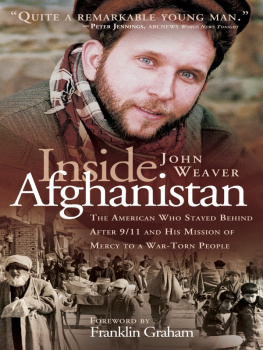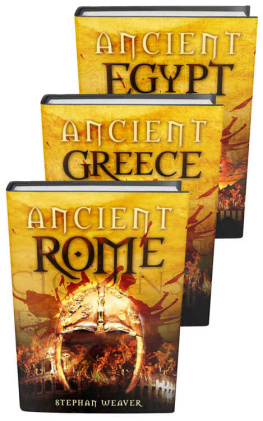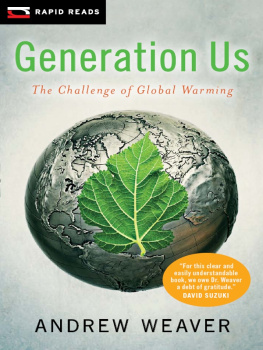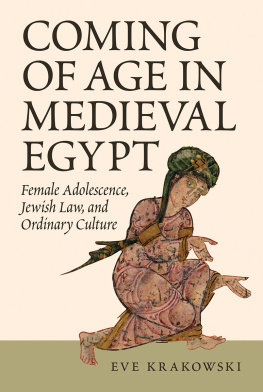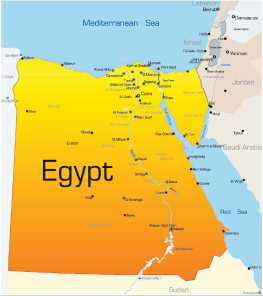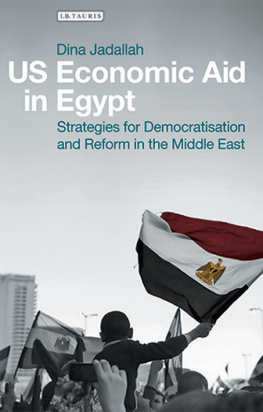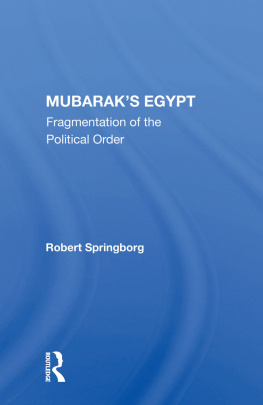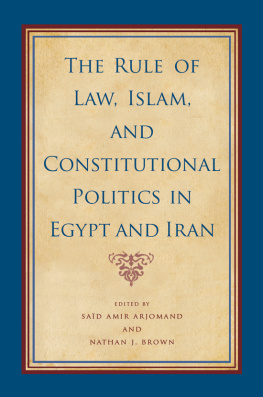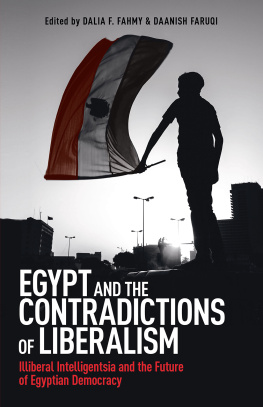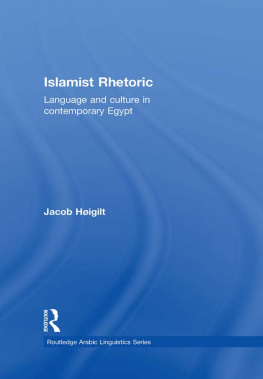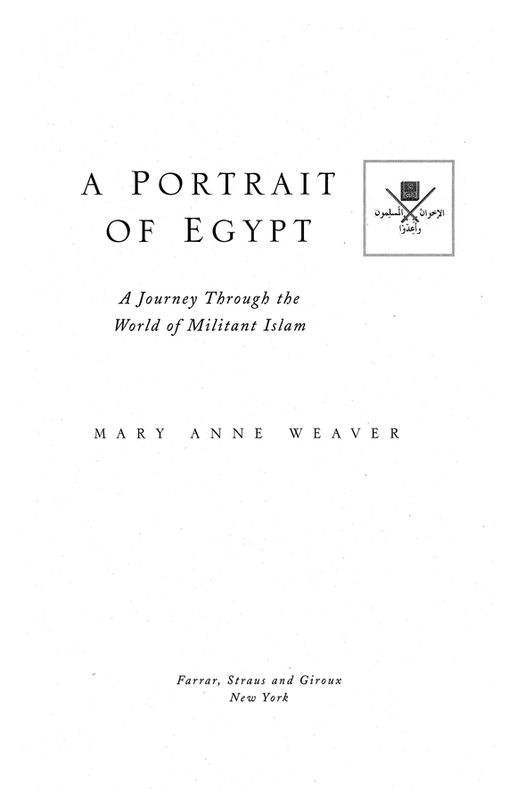I FIRST ARRIVED IN EGYPT MORE THAN TWENTY YEARS ago, my curiosity my only companion and guide. A cub reporter for UPI and a stringer for The Washington Post, I was about to enroll at the American University of Cairo as a graduate student in Arab affairs. I carried no erudition with me, no Middle Eastern ancestry, no preconceptions, not even a muse.
It was June 1977, an insufferably hot early night, when, along with my husband, Dean Brelis, the newly appointed Middle Eastern bureau chief of Time magazine, I struggled out of the cabin of the TWA plane to be enveloped at once by a blinding Saharan sandstorm that obscured all outlines and forms. Twinkling lights in the distance spoke of the Cairo airport terminal beyond. We walked slowly toward it, buffeted by sand and dust. Against the flat emptiness of the desert, the terminal buildings, as they came into hazy focus, suggested a gathering of giant dinosaurs. Feet shuffling around us were the only sounds. Then, from somewhere in the far distance, I heard the mournful chants of a mullah summoning the faithful to evening prayers from atop a mosque. The sun was just beginning to set, and the sky turned a dusty violet-pink. All around us, the silent desert stretched endlessly.
There was something about that moment, at once elusive, then filled with magic, then with wrath, that would return to haunt me over the next three years. For it was a moment, I would later learn, that was not unlike Egypt itself: strangely fascinating, enigmatic, and contradictory, filled with evasion and surprise.
Looking back on those early years, which lasted until the end of 1979, I find it nearly impossible to recall anythingbeyond the most tiresome domestic detailsthat was predictable. I began to wonder whether anomalies werent the rule. I covered food riots, in which the rioters took breaks for lunch and prayers. I dined in elegant splendor in turn-of-the-century mansions with large sprawling lawns, as incongruous as a sudden burst of color in the desert as they lofted from the midst of dismal slums. I found mirth and laughter in the City of the Dead among the hundreds of thousands of Cairenes who lived within the medieval mausoleums and tombs, performing their rites of passage with the same rhythmic precision that a Pharaonic priestess might have done. Even poverty in Egypt has a splendid kind of opulence.
I met bank clerks and civil servantsin one case, even an agronomistwho were cautious, often tedious men: gray, one-dimensional figures, almost smaller than life. Then, one Friday evening, I went to a neighborhood mosque and noticed some of their faces in the crowd. Dressed in the long, flowing robes and the white crocheted prayer caps of Islam, they each, in turnimpassioned and charismaticaddressed the crowd on the revolution that was yet to come.
It was the unexpected paradoxes of Egypt that beguiled me the most.
There were shouts, screams, and pandemonium coexisting, almost as though by design, with the ageless grace of feluccas gliding effortlessly down the Nile, their lateen sails reaching for heaven, as they have done since Cleopatras time. There were monumental astonishments and monumental confusions, contention, anarchy, and change, as forty million Egyptians grappled with modern times, and with one another, in their ancient land. Their colonial past and the worlds that it embraced were being vanquished as their Pharaonic tombs and monuments were being preserved. In between, there was a disquieting lack of equilibrium where Egypt occupied the Middle Ages and the twentieth century at once: it has research institutions for space rockets and for bullock carts. One of my most abiding images from those early days was of a SAM-7 missile being ferried to a military parade atop a donkey cart.
This book grew out of those early years and my curiosity about all the paradoxical forces that shape Egyptian life. I was determined then, as I was in later years, to get through to the Egyptians and to try to see them as they see themselvesto tell their stories in their own voices and through their own eyes. It also grew out of that distant Friday evening twenty years ago when I first visited my neighborhood mosque and began my own personal journey through the world of militant Islam. It was a strange, always human, sometimes violent, unpredictable road that I traveled for more than ten years from Egypt to Israel, the occupied West Bank and Gaza Strip, and then to Pakistan and Afghanistan. But it was to Egypt that I always returned in an attempt to trap the spirit of place that had haunted me while I was there.
I also kept returning, most intensely over the last five years, in order to understand the dynamics of a movement to which I was introduced during my student days but which had, since then, assumed so many different faces and forms. Was it possible, I wondered, that Egyptnow with over sixty million people, one-third of the Arab worldcould lose its struggle against militant Islam? And, in the event that that occurred in the Arab worlds most populous and most important state, what would it mean for Sunni Islam in general, and in particular for American foreign policy in the Middle East?
We all had a tendencyjournalists, diplomats, government officials, Egyptians, Israelis, Americans aliketo paint the 1970s in Egypt and the Middle East upon a monumental tapestry of bold color and design. There were remembrances of grand battles fought and grand illusions shattered during the 1973 October War. There were massive projects, such as the Aswan High Dam, and the arrival in Egypt of nearly twenty thousand Soviets, who arrived as quickly as they would later disappear. There was extraordinary wealth and undreamed-of profits that accompanied OPECs rise. And there were the events of 1979: Egypt and Israel signed their peace treaty; the Soviet Union invaded Afghanistan; and the Iranian revolution occurred. Visionaries and showmen pranced across the worlds stage; terrorists, nihilists, anarchists, rogues, and mystics came and went, accommodated by the season, as whimsical as the sandstorms blownby the Saharas wind. President Anwar Sadat presided over Egypt and he consumed our nights and days, for the years we lived in Cairo were the years of the first Arab-Israeli peace.
Six months after our arrival, to the astonishment of many and the sheer incredulity of most, Sadat traveled to Jerusalem on his sacred mission to speak directly to the people of Israel about Middle Eastern peace. Never before had an Arab leader visited the Jewish stateit was one of the most improbable moments in modern Arab-Israeli history. One year later, he retreated to Camp David, in the Maryland hills, with President Jimmy Carter and Israeli Prime Minister Menachem Begin for often painful, sometimes furious, secret talks that would ultimately lead to transforming his intentions into reality.
As Sadat flew out of Cairo on Egyptian Air Force One, student union elections were being held at Alexandria University, elections that would prove to be a turning point. Islamist associations swept the boards, taking control of the prestigious faculties of medicine, engineering, pharmacy, and law, where they immediately began to impose their will: forcibly preventing the teaching of Darwin and forbidding the celebration of secular national holidays. (Mothers Day was deemed to be an atheistical feast.) It was the first time that Egypts Islamist movement, in its present form, had expressed itself so forcefully in the north. Previously, it appeared to have been confined to the villages and towns of Upper and Middle Egypt, especially in and around the University of Asyut, where for a number of years the Islamists, with growing vigor, had been gaining valued ground as they intensified their activities against the Middle East peace process in general and, in particular, against Sadats secular regime. Their campaign was being led by a blind cleric, then little known outside Upper Egypt. His name was Sheikh Omar Abdel-Rahman.



